So, what are the key features and functions of the customer data platform? There has been a lot of discussion about everything the Salesforce Data Cloud can do. However, at it’s core the data cloud enables you to perform data ingestion, harmonization, unification, calculations, insights, and segmentation in order to perform action relating to your customers or other data points.
Ingestion: Billions of records from many different data sources can be rapidly ingested using an array of data connectors. It’s especially easy to setup ingestion from Sales, Service, Commerce and Marketing Clouds via the prebuilt connectors that allow you to select the exact object and data elements you need. The AWS connector is very easy to setup and new or soon to be released connectors for GCP, Azure, and Snowflake will make integrating data from core cloud platforms much easier.
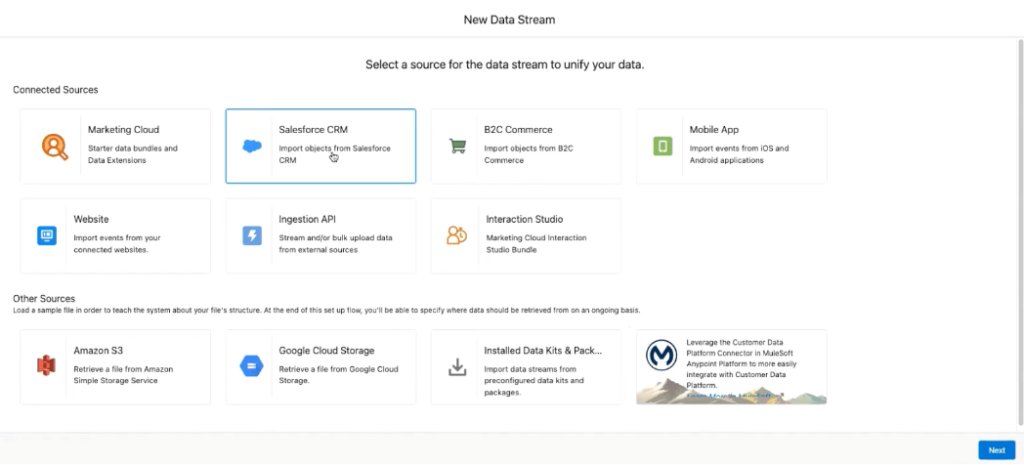
Harmonization: The multiplicity of non-standardized data from all your connected data sources can be transformed, prepped, and mapped to Salesforces Customer Data Model, which is a standardized specification objects and fields commonly found in the functional domain and within customer 360 apps. It’s easy to add additional transformation rules and fields mappings, but the important thing to note here is that you are creating a single source of truth vs. many different versions of the truth. Additional capabilities for data harmonization should be coming this year with the ability to do more complex data transformations and preparation using DBT.
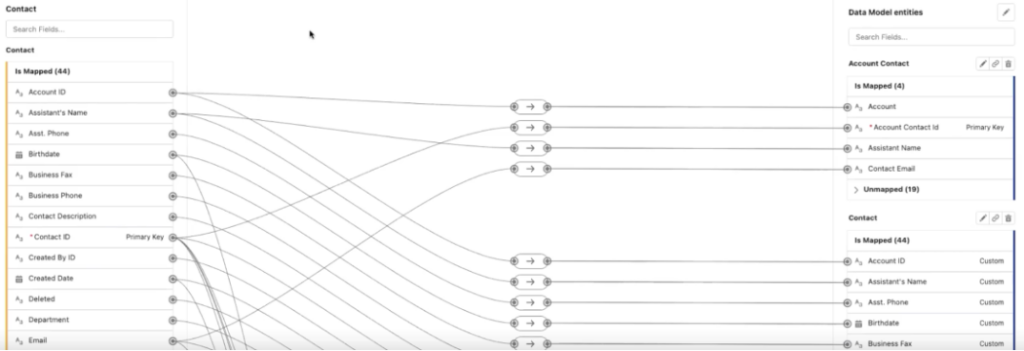
Unification: Logic can be set up to deduplicate multiple versions of the same customer record with a non-destructive data model that parents multiple profiles under a single unified profile with rules that determine the data that is prioritized for the unified record. Various data sources can then be connected to the unified customer profile (a.k.a. “Golden Record”). You can also have different unification rules for difference contexts, which is helpful as Sales may have different requirements than Marketing for the data that should be on the unified record.
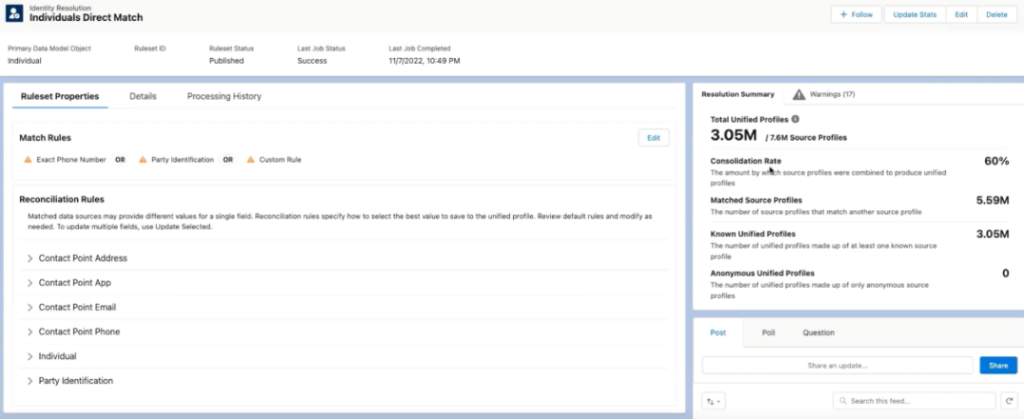
Insights: Once the data is unified and standardized, things start to get fun! At this point you can now start to perform calculations on the unified data set with the Calculated Insights tool to identify key metrics about the customer (e.g. LTV, RFM, etc.) across any object. Upcoming integrations with Einstein, SageMaker, and other analysis tools should allow for an even greater ability to glean valuable insights from the data.
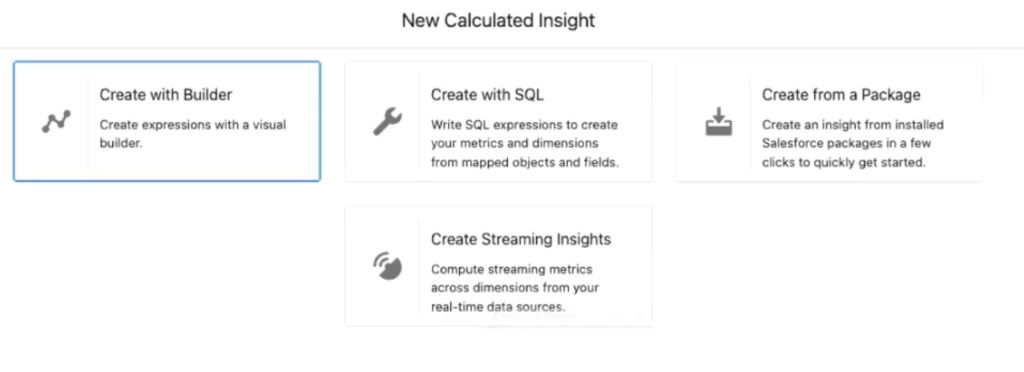
Segmentation: A powerful segmentation tool allow customer data to be sliced and diced in a variety of ways in order to define various groupings of customers to engage.
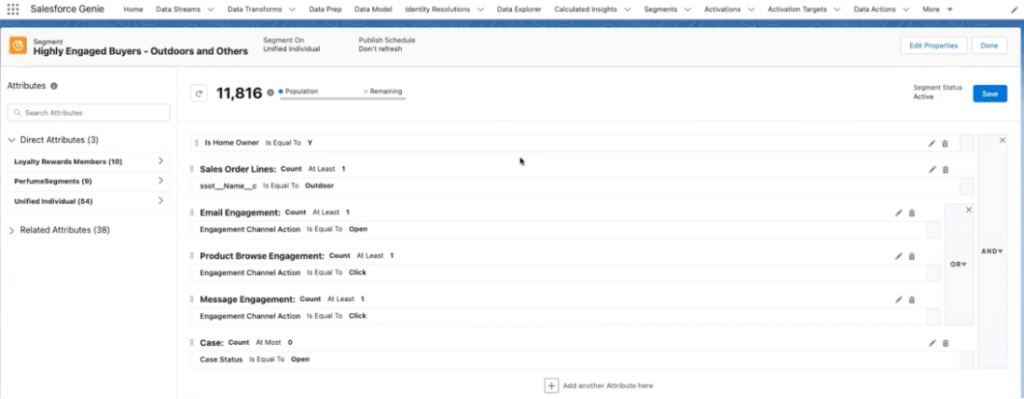
Action: Finally, and most importantly actions to engage customer or trigger activity off of other aspects of the data. Connectors to Marketing Cloud and ad networks can trigger campaigns and journeys, while web hooks and platform events can initiate other types of action across Customer 360 Apps.
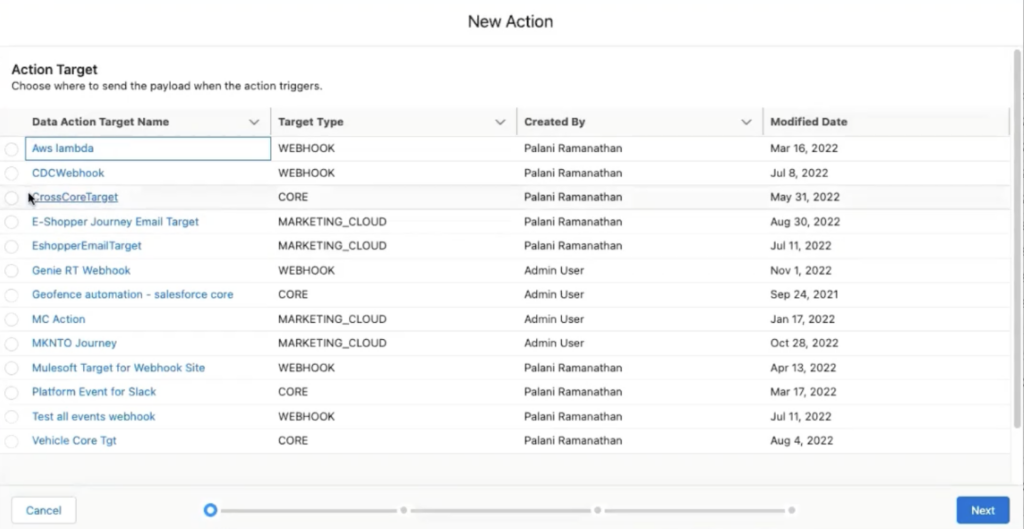

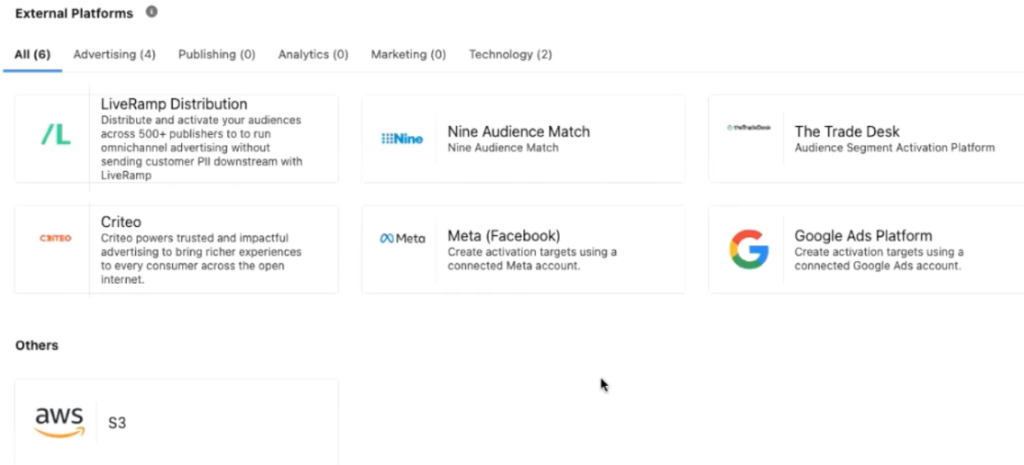
Another interesting aspect of Data Cloud is the fact that the metadata architecture aligns with the overall SFDC metadata layer, which enable the ability to expose data from Data Cloud within core platform apps. We’ll explore that more in another post.